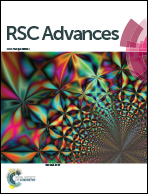Exploring the role of V2O5 in the reactivity of NH4HSO4 with NO on V2O5/TiO2 SCR catalysts†
Abstract
In this study, attention was focused on the interactions between NH4HSO4 and vanadium species in the selective catalytic reduction (SCR) of NO with NH3, along with the role of vanadium species in the reactivity of NH4HSO4 with NO on V2O5/TiO2 catalysts. Both vanadium and sulfate species occupied the TiO2 surface basic hydroxyl groups; the decreased TiO2 surface basic sites resulting from the introduction of NH4HSO4 in turn promoted the formation of polymeric vanadium species. Given increases in vanadium content, formation of polymeric vanadium species and reactive electrophilic oxygen species on the catalysts occurred, which was an important reason for the enhanced reactivity of NH4HSO4 with NO on the high V content catalysts. Besides, a higher electron cloud density around the S atoms in SO42− could be detected for the high V content catalysts, on which SO42− would be easily reduced to SO2 during the TPSR process. In situ diffuse reflectance infrared Fourier transform spectroscopy confirmed that NH4+ in NH4HSO4 functioned as a reductant during reaction with gaseous NO, while S-containing functional groups were stabilized as tridentate sulfate anions on the catalyst surface.


 Please wait while we load your content...
Please wait while we load your content...